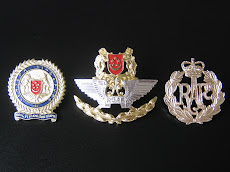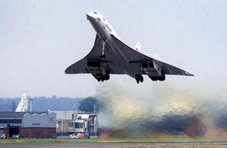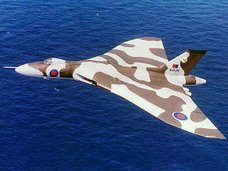by Derek Yeo - SINGAPORE - 22 May 2007
A Sunderland berthed at anchor off Kallang Airport. The iconic flying boat rocked idly, dipping and rising in choppy swells of the sea around it.
Beyond the Royal Air Force Sunderland, a Boeing 314 with "Pan American Airways" emblazoned on its fuselage side, skimmed the waves on its take-off run. The giant seaplane lifted off, trailing a slipstream of sea-water beneath it. Its four Wright engines revving at full throttle, it's off on another trans-Pacific scheduled service.
A TYPICAL panorama I soaked in, in my early teens during annual school holidays in the early fifties at Tanjong Rhu chalets near Kallang Airport, Singapore. The image - vividly etched in my mind ever since - sparked my life-long love affair with the aeroplane.
On lazy afternoons, I would spent hours sitting on the sea-front gazing curiously at the airfield's activities across the water.
Years later in 1961, in Beatty Secondary School, I joined the Malayan Air Training Corps (MATC). Similar to the United Kingdom's Air Training Corps (for boys) and Girl Venture Corps (for girls), the MATC trained their air cadets in leadership skills, survival techniques, first aid, air navigation, airframe and engine knowledge and other aviation studies. Corps' activities imbued cadets with selfless service to others, an adventurous spirit and character-building. Aptly, the MATC adopted motto "Venture Adventure" echoed its parent body's in the UK.
I was assigned a cadet number - 539; the first digit denoted I was part of 5 Squadron in Beatty Secondary School. Mr Hee Swee Khee, our History Master and a volunteer pilot (with the rank of Squadron Leader) in the Malayan Auxiliary Air Force, led 5 Squadron, MATC. When he wasn't teaching, Mr Hee flew Harvards and Tiger Moths with MAAF pilot trainees.
The MATC - Singapore branch (its Malayan branch was based in Kuala Lumpur) had its headquarters at Kallang Airport in the fifties. In the early sixties, it re-located to former Workers' Brigade* premises at Kolam Ayer.
The Corps' Commandant, Wing Commander Roland Park had an efficient staff which included Squadron Leader Murugan and a young Flying Officer Jalil. I met Jalil again in 1969 at Singapore's Flying Training School, RAF Tengah. He served as the school's Adjutant and Administrative Officer.
Many airmen had their career foundation firmly grounded in the MATC. Sulaiman Sujak was perhaps the most illustrious among them. From air cadetship, he went on to fly Canberras and Vulcans in the Royal Air Force. When the Tentara Udara Di-raja Malaysia (Royal Malayan Air Force, later Royal Malaysian Air Force) formed in 1956, the government appointed Sulaiman the RMAF's first Chief of Air Staff with the rank of Air Vice-Marshal.
Among my ex-cadet contemporaries in the air force were: Kong Kian (RAF & RSAF), Abdul Wahab (RSAF), Lee Hium Heng (RAF) and Bob Tan (RSAF). Sadly, Kong Kian and Bob Tan had passed on. Lieutenant Kong Kian died in a road accident in 1975 while Bob Tan, a Singapore Technologies Aerospace executive, died in 2002 after an illness.
Other fellow cadets such as Bala, Samson, Terry Teo Kar Teck and Tan Han Song travelled to Britain and enlisted in the Royal Air Force there. Samson and Terry joined as Boy Entrants in the RAF Apprenticeship Scheme. They trained at RAF Halton. Bala and Han Song enlisted under the Adult category in 1961 after enduring a two-week roller-coaster passage (storms in the Indian Ocean and Arabian Sea) to Liverpool onboard a Blue Funnel Line boat. For a thrilled Bala and wide-eyed Han Song, it was a trip of a lifetime. It was, for both, their first venture out of Singapore.
Terry was an ex-Beatty schoolmate too. In 1967, we met again, in RAF Tengah where my unit, 81 Squadron (equipped with Canberra PR7s) was based. Terry had been posted to 45 Squadron at Tengah from RAF Abingdon.
After passing out with distinction at Halton in 1965, the RAF offered Terry a Queen's commission in the Engineering Branch. During Officer Selection, however, he was short-listed because of a family situation.
Anyway, I was glad to see my old schoolmate, SGT Terry Teo, again.
I picked up much knowledge and many skills from two experienced Chief Technicians in Tengah, Richard Parr of 81 Squadron and Gordon Hutchinson of ASF - Engine Bay.
*NOTE: In the eighties, the Workers' Brigade merged with the Singapore Fire Brigade to form the Singapore Civil Defence Force.
Copyright © 2007 AIRMENews. All rights reserved.
 by Derek Yeo - SINGAPORE - 28 July 2007
by Derek Yeo - SINGAPORE - 28 July 2007






